Fiction
Nonfiction
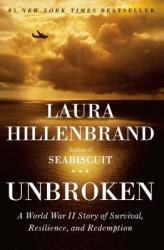
Unbroken, is a book of suffering, friendship, strength, and journey's throughout life. The story takes place in the Pacific War of WW2, following the struggle of Louie Zamperini. Louie's life starts out "untameable" drinking, stealing, and running from the cops at the early age of 10, he cause quite the mischief in his home town of Torrance, California. Later on in high school Louie is going down the wrong path, until his brother turns him around and sets him on the path of becoming an Olympic runner. Louie runs in the 1936 Berlin Olympics and places 8th. Next thing you know World War Two breaks out, Louie joins the Army Air Corp and becomes a bombardier of a b-24 plane.
Next in the story, whilst on a rescue mission the "Green Hornet" a faulty B-24 crashes into the pacific ocean, taking Louie and his flight crew with it. Mac, Phil, and Louie survive the initial plane crash and face many challenges at sea. Mac dies along the way, but Louie and Phil survive 47 days at sea before being captured by the Japanese. Phil and Louie are quickly put into a Japanese p.o.w camp, where they are abused, tortured, overworked, and starved.
To avoid spoilers, I won't go further into the story, and if Louie and Phil survive or not. I HIGHLY recommend this book, it's a great eye opener for PTSD, and the Pacific side of WWII, along with intense suspense, struggle, and development of the main characters. Laura Hillenbrand does a great job or portraying this hero and survivor's story.
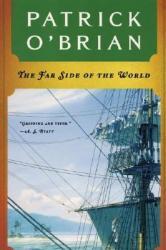
Nautical historical fiction is a rare genre for me to read. The last one I read—and that most people would be able to recognize—was Moby-Dick , and that was probably 15 years ago. Needless to say, I found myself in brief possession of The Far Side of the World and decided to give it a read. Of course, this was mostly because of the movie of the same name released in 2003 that earned many Oscar nominations (only winning in two). While the plot of both is slightly different in a few key areas, I wasn’t disappointed with having read this book.
First, as a historical look into the realms of sailing and whaling at the time, The Far Side of the World does a fantastic job of informing and educating the reader without necessarily resorting to huge exposition dumps. Sure, a few moments were a little obvious that the author was trying to get information across as quickly as possible, but these were rare. Secondly, this book seemed to include an exhaustive amount of problems that you’d encounter when sailing the seas. This meant that each page of each chapter had something the crew was trying to overcome, even if this seemed like a distraction at most times.
While the main thrust and driver of the plot of The Far Side of the World was clear from the start, my one qualm with this book was its inability to transition from one thought to the next. It sure had a steady pace, like a ship cutting through calm waters. Sometimes, though, the different topics would come in a choppy way that made me double back and re-read a page to make sure I didn’t miss some crucial transition (which were rarely there). Perhaps this adds to the realism of the “things happen without expecting them” element of sailing. Far too often, I found myself trying to figure out why this minor sub-plot mattered before it changed to something else entirely.
A thorough and steady-paced nautical historical fiction, I give The Far Side of the World 3.5 stars out of 5.
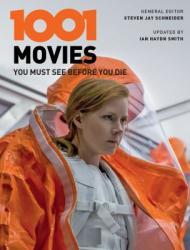
As a movie aficionado, it was only a matter of time before I picked up this book. At the time, the 5th edition covered most of the films that were out at the time, but I do realize there are more recent versions of this book that include some of the latest hits of the last decade. Not one to use this book as a simple desk reference, I took the time to sit down and read through the reviews of these 1,000+ movies. In the time since buying this book, I’ve managed to increase my percentage of films seen, but there’s still a long way to go.
Even before I started reading this book, I had already seen a good portion of the movies mentioned, many of which won critical awards for their achievements. With a concerted effort, I’m now sitting at 42% of these 1001 movies seen in my short lifetime. Having read the reviews of the rest of them, I can honestly say there are still plenty of films out there that pique my interest. Many of these cinematic masterpieces are merely unwatched because I haven’t gotten around to them yet, despite their cinematic accolades.
Overall, though, there were times where I’d watch a movie contained on this list and wonder, “why is this here?” 1001 films is a lengthy list, so there was undoubtedly going to be “filler” on this list. Then again, everyone’s tastes are different. While I feel movies were missing from this edition (likely removed from previous versions to make room for newer ones), it’s still a robust set. Not everything is “artistic” or “award-winning,” which is fine because, as the book mentions, “Sometimes you want a nice steak, and sometimes you just want a greasy hamburger.”
A robust set of cinema, I give 1001 Movies You Must See Before You Die 4.0 stars out of 5.
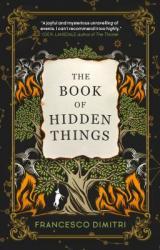
'The Book of Hidden Things' is a fantasy story of 4 friends Tony, Fabio, Art, and Mauro. These friends from a small town Casalfranca in Italy, make a pact to meet every year. When Art doesn't show up this year, Tony, Fabio, and Mauro decide to check what happened to him.
While they search for him, they learn mysterious information about Art, his life, his research, and things become more complicated and confusing. When Mauro gets fired by Art's ex-girlfriend, they all step back thinking about the risk they are taking to find Art. At last, Art shows up, reveals information about his research and forces them to trust him and take an important decision with their lives.
There are no words to explain how good this book is! The narration is very gripping and the mystery lingers till the end of the book and even after finishing the book. Characterization is simply superb. While Art is a unique character, Tony is a wonderful mate, Mauro, a responsible husband and friend who is guilty of leaving behind his favorite hobby of playing guitar and Fabio is a person with his insecurities and money problems.
I could get a glimpse of Southern Italy, the weather, the scenery, and the cuisine as well through this book. The book cover and the name are apt.
If you love mystery and fantasy, you will like this book. But, fantasy and mystery feel very real.

An excellent adult Sci-Fi novel in a future where to join humanity's military, the CDF, you must be 75 years old. Interesting takes on aliens, human interactions with other species, and combat. Be warned, there are sections of this book that go quite in depth about the background of certain story elements and they can seem long winded, but they all contribute to the story at large. Great read and hard to put down once you've found a little traction.
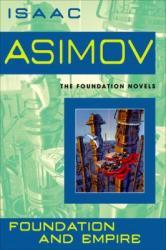
One of my qualms with the start of Isaac Asimov’s Foundation series was how different the stories were from each other. Each was set in the same universe but failed to have much of a cohesive narrative that tied them all together. While Foundation covered five different short stories, its sequel, Foundation and Empire managed to whittle this method of storytelling down to twonovellas. The result was a clear improvement in clarity and focus as each half of this book only covered a single plot each.
In Foundation and Empire, I finally was able to read a story that stuck with me in this series. Up until this point, I probably couldn’t tell you the premise of any of the short stories in Foundation, let alone the plot of the first half of this book. However, once this book transitioned over from topics that were more in line with science into ones that had a more fictional bend, I found the narrative to be much more enjoyable. It’s almost a shame that the whole book wasn’t an exploration of the universe presented in the second half.
Even if it took a book and a half for me to warm up to this series, I could honestly say that “The Mule” piqued my interest and will likely contribute to my continued reading of the Foundation series. This was probably because this particular half of the book introduced a clear antagonist to the story. It’s not that other stories in the series up until now didn’t have antagonists, it’s more that they weren’t an individual villain up until now. Now things are getting interesting!
A natural evolution of Foundation and an improvement on its predecessor, I give Foundation and Empire 3.5 stars out of 5.
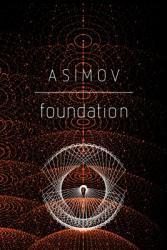
For years, people have asked whether or not I have read the penultimate science fiction series that is Isaac Asimov’s Foundation. Up until now, I could not say that I had. While I knew the series by its name, I hadn’t ever heard any comparisons or even knew what these books were about. This probably should have been my first indication of what to expect. I wasn’t expecting anything other than its notable status as a pillar of classic sci-fi. If anything, the fact each “section” of Foundation is its own short story says volumes about the origin of the genre.
Set within the same universe, Foundation follows five different groups across the timespan of a couple hundred years. Asimov explored a few different concepts and spent most of this book in world-building mode. I’ll applaud his ability to remain fairly consistent across these different stories, but the fact that there isn’t much that ties them together is the main issue I have with this book. Because they’re mostly five separate short stories, there’s not too much “action and consequence” between the different sections. This is what I would expect from a book with a standard three-act structure plot.
Additionally, I think the science fiction stories I tend to enjoy lean more on the “space opera” side than where Foundation lies. The fact that Foundation dives so deep into heady—and often controversial—topics like religion, politics, and economics is probably what lost my interest. Sure, there are some neat applications of technology that drives these topics. However, since it felt more like an academic lecture instead of an entertaining read, I glossed over a lot of the details. Maybe the other books in the series remedy this but for Foundation I just kind of felt “meh” about it.
An OK start to a highly-lauded science fiction series, I give Foundation 3.0 stars out of 5.
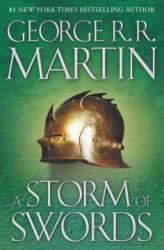
If things hadn’t already turned dark in Westeros, they certainly do in A Storm of Swords. The complicated political situation in the end of A Clash of Kings gets even more complicated as this third book dives into complex armies, weddings, wars, and so much more. George R. R. Martin’s writing may be dense, but I have never encountered a fantastical world as deeply developed as his. A Storm of Swords is jam-packed with intrigue and excitement, and it left me wanting more. I would recommend this book even if you have already seen the show; reading the books adds a whole new dimension to the characters, the plot, and the world.
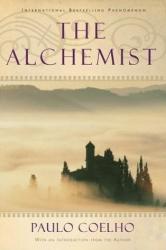
The Alchemist is the story of Santiago, a shepherd boy, who goes on a journey to find treasure he saw in a dream. It is a story of philosophy and self-discovery, and its open-ended style leaves a lot of room for interpretation. That is the beauty of this book; every reader will get something different out of it. I found The Alchemist to be very inspirational and calming, as well as immensely interesting. This quick read is great food for the soul.
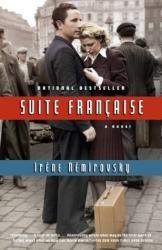
Suite Francaise is an interesting book detailing the experiences of multiple characters and what they face as they evacuate Paris and deal with the German occupation of France. I read this book for school but still found it very interesting. It was a bit slow at first with exposition of characters in almost every chapter. I did enjoy getting to see how different classes reacted to having to leave their homes and what they faced afterwards. Not only does Nemirovsky use multiple characters to show the difference in experience, but also her use of imagery and figurative language add to the essence of struggle. Overall, I enjoyed this book but wouldn't have chosen it myself.
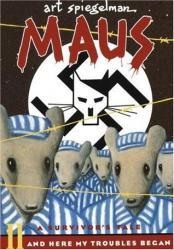
Maus II, the sequel/continuation to Maus, continues the story of Vladek Spiegelman told by his son in the form of a comic book. This book is amazing because, just like the first, it uses an animal metaphor to easily show the reader who is who in the story. Maus II takes a darker turn because Vladek is now in the depths of Aushwitz. I love these books and their creative outlook on the War and the Holocaust. No other historical book has made me this intrigued and want to continue reading.
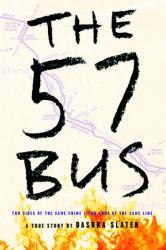
The book, The 57 Bus, by Dashka Slater, is quite the moving novel. The author does a great job of solidifying the main characters, Sasha and Richard, and develops there characters in a beautifully realistic way. The sudden transition for just normal everyday life to a calamity also flows well with the book. The fact that this story actually happens is also very interesting. Overall, The 57 Bus is a fantastic book and I would recommend it to anyone. The novel is a decent length but will have you engrossed in it until the end.
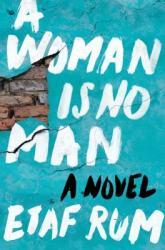
Definitely among my favorite books of the year. Beautifully written in alternating points of view, each woman's story is absolutely compelling, enraging, and heartbreaking. There was a passage toward the end of the novel where I found I actually was holding my breath.
This is the type of book that makes you understand the power of words and stories and how important they are, on so many levels - from Isra reading to escape her suffocating life, to Deya for whom books mean freedom and education and choice, to the reader who is ultimately changed by the experience of their story.
This book is going to stay with me for quite a while - definitely an author to keep on my radar!!!
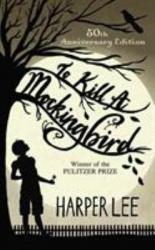
To Kill a Mockingbird is a well thought out, very deep and well executed book. Although it contains some very strong language, I'd say this is a must read for any teenager. Set during the time of the depression, this book deals with many political issues such as racism while also managing to teach very important lessons along the way. The complicated sentence structure in the book, as well as the vocabulary serve to make it a very fun and chalenging read. In my opinion this book is truly one of the best written in history.
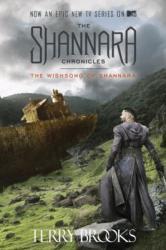
One thing that was made clear to me when I read The Elfstones of Shannara was that this trilogy (that started with The Sword of Shannara ) didn’t follow the same characters from book to book, per se. Sure, there were character like Allanon the Druid who managed to span all three volumes, but overall I didn’t find that I needed to have read the previous book in the trilogy to understand what was going on in the story. This was quite beneficial when I started reading The Wishsong of Shannara, as it quickly grew to be my favorite in the series so far.
While I had high hopes for the “main quest” of this book, the fact that it’s put into side-story status almost from the beginning was a little frustrating. Don’t make me follow the journey of the character who needs to grow the most! Show me the thrilling adventures of a magical girl and her Highlander and druid escorts. Regardless, I did find Jair’s journey to be a bit more interesting once it was clear that’s who we were following through the majority of the book. Sure, we touched back with Brin occasionally, and her adventures were neat, too—just not nearly as interesting as Jair’s ended up being.
I have previously complained that The Sword of Shannara seemed like a bit of a Lord of the Rings knockoff. Additionally, The Wishsong of Shannara does have some similarities to The Two Towers. Not necessarily being tied to an overarching story arc did help to make this book quite interesting in terms of what minor characters could be developed to advance the story. This is on top of the excellent growth of both Ohmsfords as they learn the true power of the magic that lies within them. If you’re interested in any of the original Shannara books, I’d suggest you give this one a read first.
A relatively original high fantasy, and my favorite of the Shannara trilogy, I give The Wishsong of Shannara 4.5 stars out of 5.
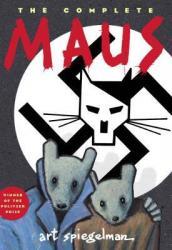
Maus 1 is a fascinating graphic history of the Holocaust and what Jewish people went through. Artist Art Spiegelman uses a variety of metaphors to depict his fathers experience as a Polish Jew during the Holocaust. I found this book incredible because it uses an animal metaphor like Animal Farm to give a deeper insight into the story. This graphic history, much like a graphic novel, uses lights and darks, white and black, and special images to draw the reader in and help them understand the hardships Vladek Spiegelman faced. I loved this book and think it is a must read book for everyone.
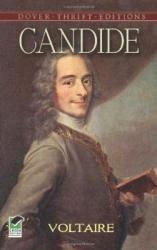
Candide by Voltaire is an interesting book about a man who believes everything that happens will be for the good of man (perverted optimism) even though he is faced with incredible suffering. I read Candide with my European Literature class and I found it a very good book to demonstrate perverted optimism and satire. Voltaire uses satire as an effective device to show the horrors of the world at his time. While Candide is mostly based in truth, it has many fictional ideas such as a country called Westphalia and the mythical El Dorado. Overall, I really enjoyed this book even though it is very weird, it still had an interesting use of language and story line.
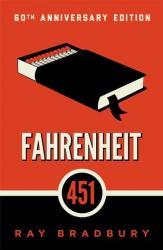
With this dystopian society reversing positions in society, firefighters burn books and light houses on fire. Montag, a veteran firefighter, soon meets a girl who changes his mind about life, books, and his job. Soon, this mystery girl disappears and Montag soon sets out on a risky adventure to solve the mystery of his lost friend. With him betraying society, reading intriguing literature, and meeting new friends, the society is out to find Montag. Will he escape into the unknown world or will he be caught with his fate unknown? This book is an adventure worth reading!
Reviewer Grade: 9th
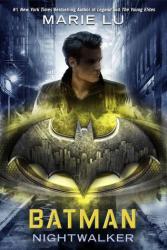
In "Batman: Nightwalker", the early years of Bruce Wayne is retold in the style of a YA novel. Years after the death of his parents, Bruce struggles with loss, a sense of purpose, and the empire he has just inherited. When a string of mysterious crimes pop up in Gotham City, he soon gets tangled in the web.
First off, when I started this book, I didn't actually know much about the Batman universe, but it was easy to catch up -- especially considering it takes places years before Bruce's story actually begins as Batman. However, I have read Marie Lu's work before, so I had a general idea of what I was getting into. There are quite a few things I liked about this book: the plot was intricate and engaging, the protagonist was likable and interesting, and the twists and turns were really well executed. But, what kept me from giving this book five stars was the writing style. Normally, I really enjoy Marie Lu's writing style, but this book was different than her other work. The dialogue often felt really unnatural (especially when it came to Bruce and his friends). There were lots of lines that I thought were cheesy or robotic and that pulled me out of the story. Had the writing flowed a little more and the dialogue been more natural, I would've definitely given this book five stars. But, I would still recommend it because, despite the flaws, I really enjoyed it for its elaborate, high-paced plot.
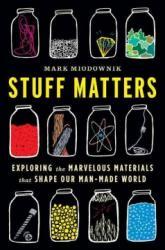
Stuff Matters is a nonfiction book on material science. The author explains everything about 6 different materials that make up our world. He goes through the history, how its made, and what is made from it. The author explains in a way that makes it a very interesting read. I found this book because I thought that the cover looked very interesting, and I it was also recommended to me by my friend. This is a great book to read if you are interested in the world around you. I would recommend it for ages 12-14.
Reviewers Grade: 9


